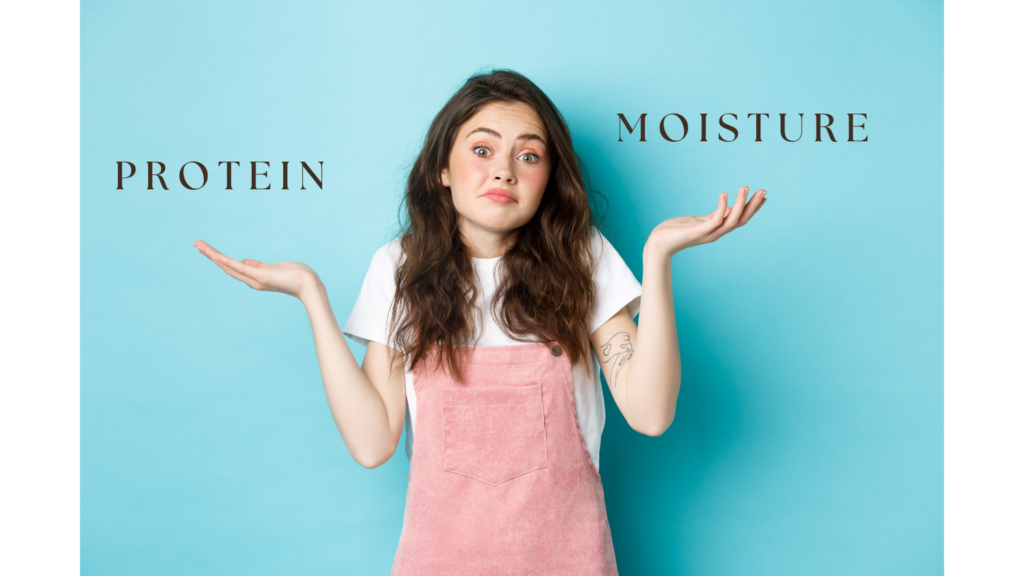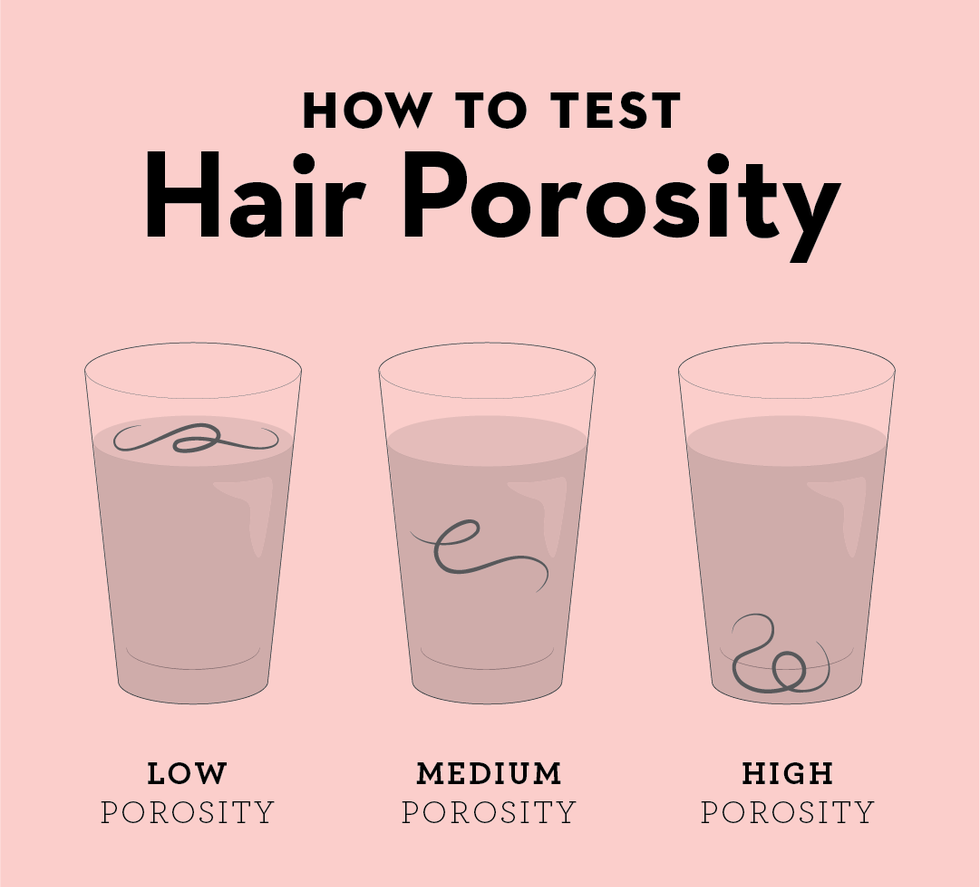Protein vs Moisture Debate: How to Determine Your Hair Needs


When it comes to achieving luscious locks, two key factors stand out: protein and moisture. These elements are not only essential for maintaining hair health but also play a crucial role in determining the effectiveness of your hair care routine. But how do you know which one your hair needs more of?
Understanding the role of protein and moisture is key to unlocking your hair’s full potential. While both are crucial for healthy hair, knowing when and how to prioritize them can transform your locks from lackluster to luscious. Whether your hair is dry and brittle or limp and lifeless, understanding the balance between protein and moisture is the first step towards achieving the beautiful, healthy hair you’ve always dreamed of.

Let’s break it down.
Protein:
- Purpose: Protein is essential for strengthening the hair shaft, repairing damage, and reducing breakage. It improves the overall health and appearance of your hair, making it more resilient and less prone to damage
- Signs of Need: Dry, brittle hair that is difficult to style and prone to breakage can indicate a lack of protein. When your hair lacks protein, it can become weak and fragile, leading to increased breakage and split ends
- Risk: While protein is crucial for hair health, too much of it can have adverse effects. Excessive protein can make your hair stiff, straw-like, and more prone to breakage. This condition, known as “protein overload,” can occur if you use protein-rich products or treatments too frequently.
Moisture:
- Purpose: Moisture hydrates the hair, keeping it soft, smooth, and less prone to breakage. It improves the flexibility, strength, and elasticity of your hair, allowing it to bend and stretch without breaking
- Signs of Need: Dryness, breakage, and damage are signs that your hair may need more moisture. When your hair lacks moisture, it can become dry, brittle, and more susceptible to breakage and split ends.
- Risk: Over-moisturized hair can become limp, greasy, and prone to breakage. This condition, known as “hygral fatigue,” occurs when the hair absorbs too much water and swells, putting pressure on the protein structure of the hair. Over time, this can weaken the hair shaft and lead to breakage.
Solution: Strike a balance between moisture and protein. They actually work the best when used together – the ultimate hair care power duo!
But how can you know what YOUR hair needs?
Hair Porosity: The Key Factor in Determining Whether Your Hair Needs More Protein or Moisture
Hair porosity refers to how well your hair is able to absorb and retain moisture. Here’s how hair porosity can help you understand your hair’s needs:
- Low Porosity Hair: Low porosity hair has a tight cuticle layer that makes it resistant to moisture. This type of hair often benefits from lightweight, water-based products that can penetrate the hair shaft easily. Deep conditioning with heat can help open the hair cuticles slightly to allow for better moisture absorption. However, low porosity hair can also experience protein buildup if too many protein treatments are used, so it’s important to balance protein and moisture carefully.
- High Porosity Hair: High porosity hair has gaps and holes in the cuticle layer, which allow moisture to easily enter and exit the hair shaft. This type of hair often needs more protein to help fill in these gaps and strengthen the hair. Protein treatments can help reduce breakage and improve the overall health of high porosity hair. However, it’s also important to moisturize high porosity hair to prevent it from becoming dry and brittle. Using protein treatments and deep conditioning can help maintain the balance of protein and moisture in high porosity hair.
How to Determine Your Hair’s Porosity
1. Observe Humidity Response:
Expands in Humidity: If your hair tends to expand or frizz in humid conditions, it may indicate that it needs more moisture. This is because dry hair is more prone to absorbing moisture from the air, causing the hair shaft to swell and result in frizz.
Falls Flat in Humidity: If your hair falls flat or loses its shape in humid conditions, it may indicate that it needs more protein. High humidity can weaken the protein structure of the hair, causing it to become limp and lose its volume.
2. Conduct a Porosity Test:
Float Test:
Take a strand of clean hair and place it in a glass of water. If the hair sinks quickly, it has high porosity, meaning it absorbs moisture easily but may struggle to retain it. High porosity hair often benefits from regular deep conditioning treatments to help retain moisture.
On the other hand, if the hair floats for a while before sinking, it has low porosity, indicating that it has difficulty absorbing moisture. Low porosity hair may benefit from protein treatments to help strengthen the hair shaft and improve its ability to absorb moisture.

Slide Test:
Run your fingers along a strand of hair from end to root.
- If you feel little resistance and the strand feels smooth, you likely have low porosity hair.
- If you feel bumps or roughness along the strand, you may have high porosity hair.
3. Observe Hair’s Reaction to Water and Products:
Low Porosity Hair: May repel water and take longer to get fully wet.
High Porosity Hair: Quickly absorbs water and products but may also dry out quickly.
Maintenance Tips to Support Protein-Moisture Balance
- Use Protein Treatments Sparingly:
While protein is essential for hair health, using too much can lead to protein overload, making your hair feel stiff and brittle. Use protein treatments only when needed, such as after chemical treatments or when your hair feels weak and prone to breakage.
Blonde Doctor Hair Recommendation: K18: Leave-in Molecular Repair Hair Mask - Incorporate Deep Conditioning Treatments Regularly:
Deep conditioning treatments help restore moisture to your hair and keep it hydrated. Aim to deep condition your hair once a week or as needed, focusing on the ends and dry areas.
Blonde Doctor Hair Recommendation: Authentic Beauty Concept: Hydrate Mask - Alternate Between Protein and Moisture-Based Products:
Use a balance of protein-rich and moisturizing products in your hair care routine. Alternate between protein treatments and deep conditioning treatments to maintain a healthy balance. - Pay Attention to Your Hair’s Needs:
Observe how your hair looks and feels to determine if it needs more protein or moisture. Dry, brittle hair may indicate a need for moisture, while limp, weak hair may indicate a need for protein. - Avoid Overloading Your Hair with Products:
Using too many protein or moisture-rich products can lead to buildup and imbalance. Use products in moderation and adjust based on your hair’s needs. - Protect Your Hair from Environmental Damage:
Environmental factors like sun exposure and harsh weather can strip moisture from your hair. Use protective hairstyles and products with UV protection to shield your hair from damage.
Blonde Doctor Hair Recommendation: Kevin Murphy: Untangled
TL,DR:
Achieving healthy hair is not just about using the right products; it’s also about understanding your hair’s unique needs. Protein and moisture are fundamental elements in hair care, each playing a crucial role in maintaining hair health and strength. By learning to recognize the signs of protein or moisture deficiency and understanding your hair’s porosity, you can tailor your hair care routine to suit your hair’s specific needs. Remember, finding the right balance between protein and moisture is key to achieving beautiful, healthy hair. So, whether your hair craves a protein boost or thirsts for moisture, listen to what your hair is telling you and give it the care it deserves.

